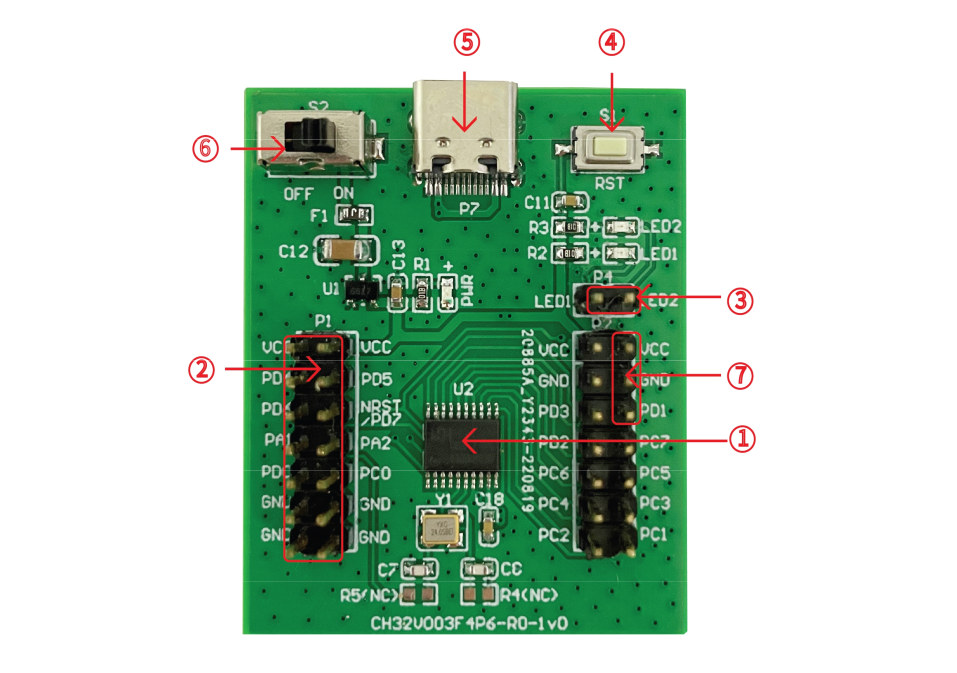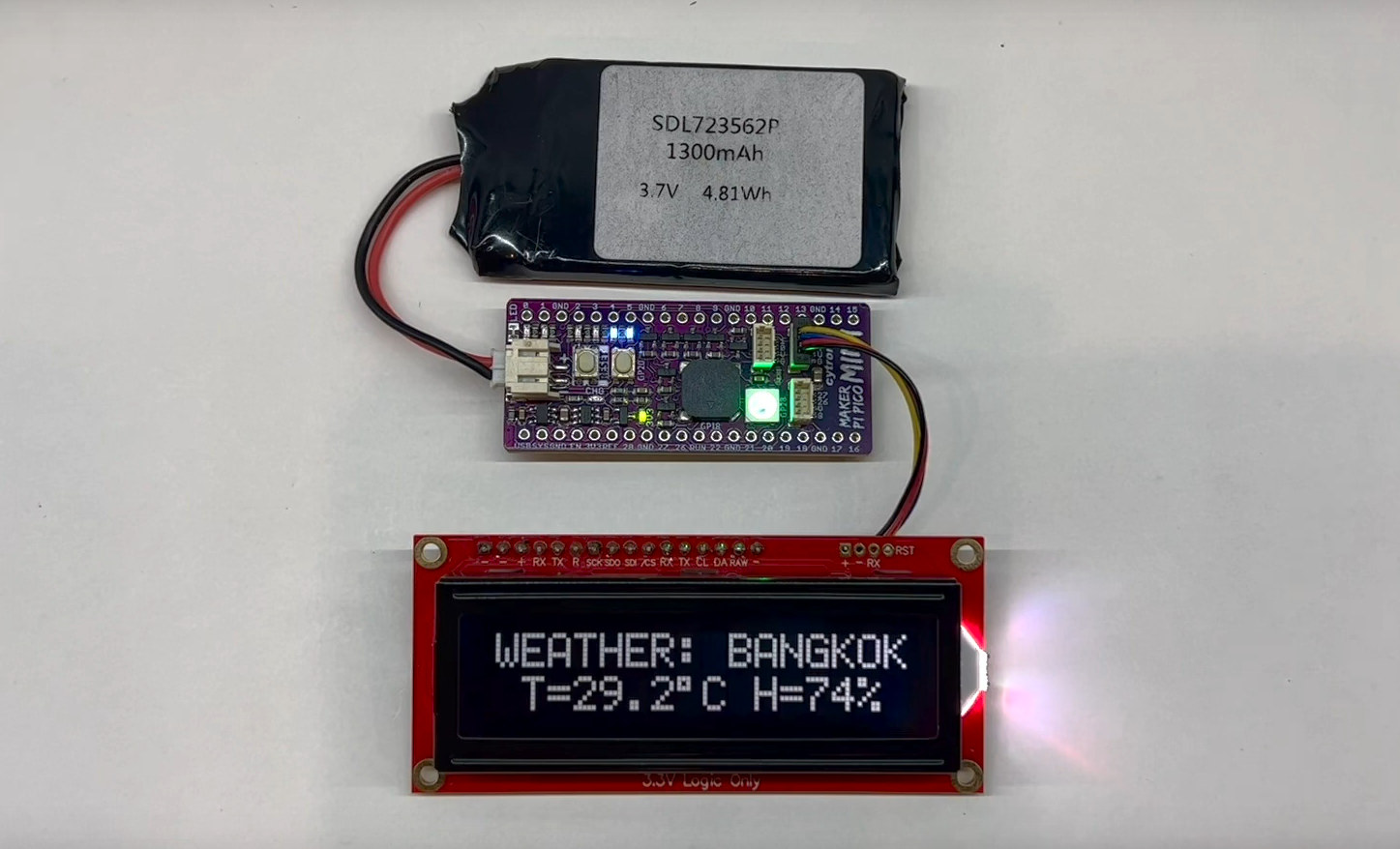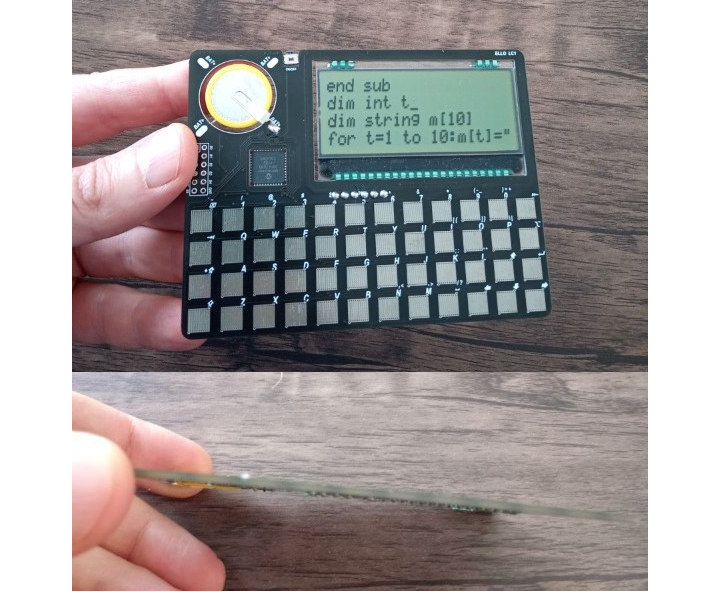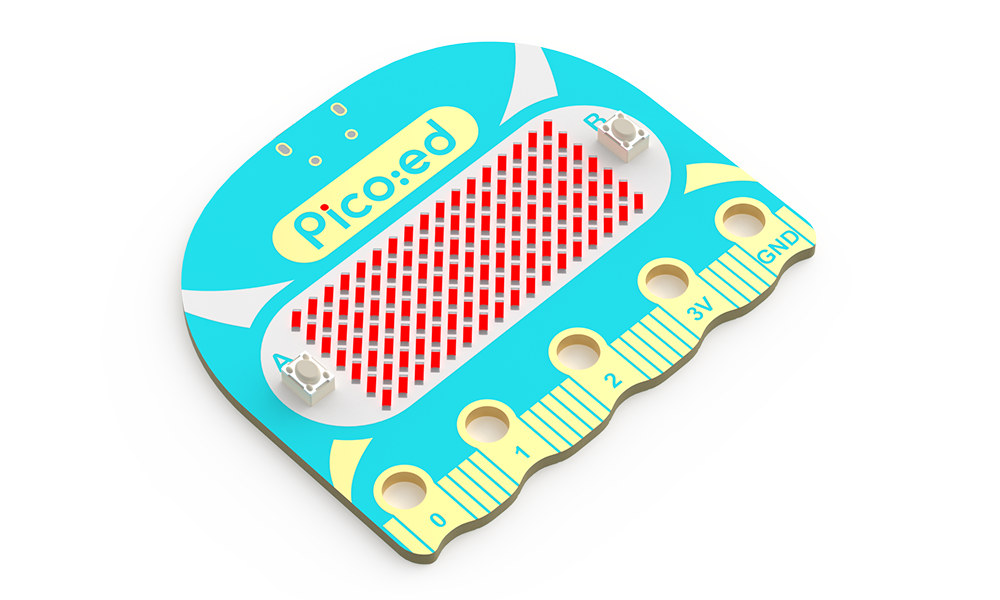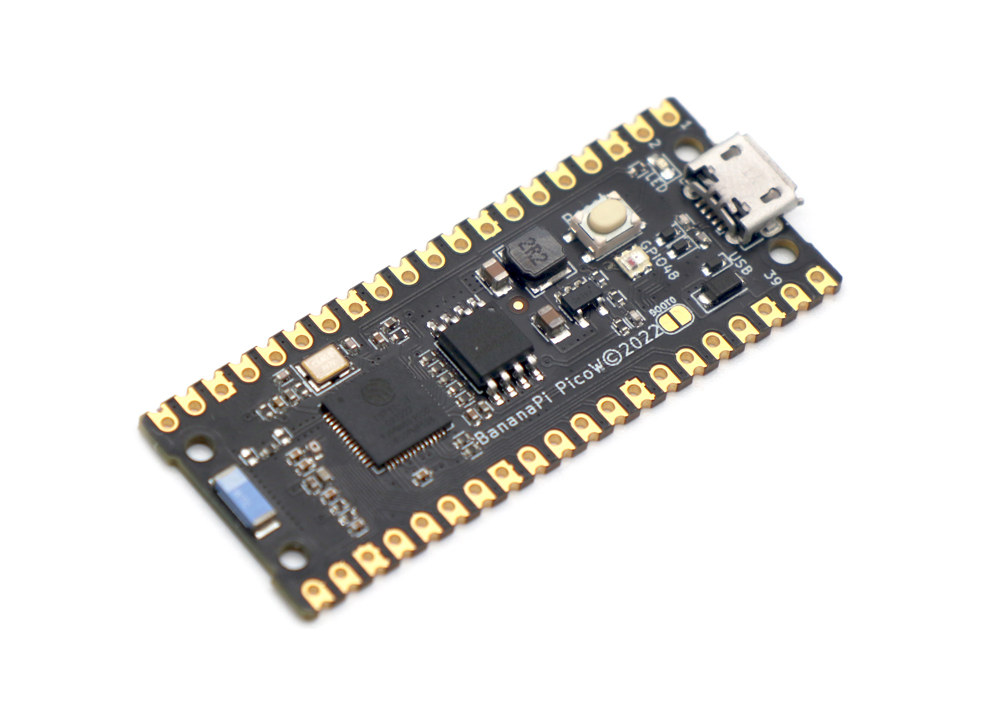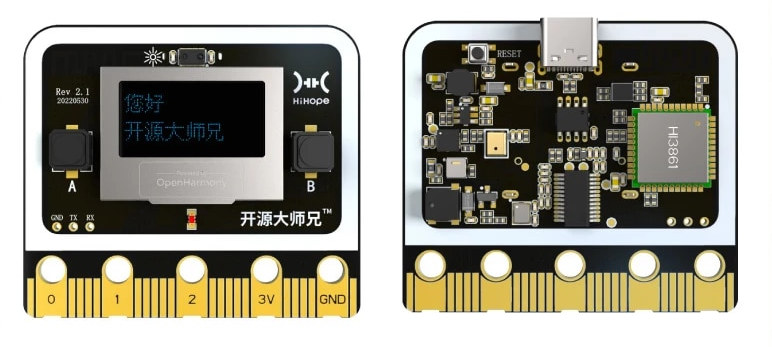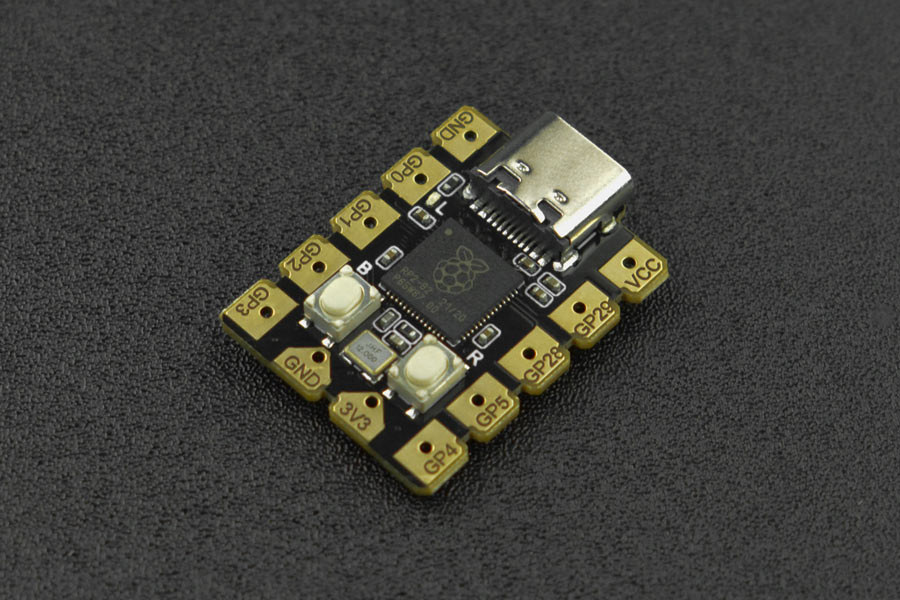WCH CH32V003 is a new ultra-cheap RISC-V microcontroller (MCU) clocked at 48 MHz with 2KB SRAM, 16KB flash, and a bunch of interfaces that sells for under 10 cents in quantities. The MCU offers up to eighteen GPIOs, UART, SPI, I2C, an 8-channel 10-bit ADC, and several timers in TSSOP20, QFN20, SOP16, or SOP8 packages, and a small development board is also available. WCH CH32V003 specifications: CPU – 32-bit “RISC-V2A” core up to 48 MHz Memory – 2KB SRAM Storage – 16KB flash Peripherals Up to 18x GPIO with interrupt support 1x USART interface 1x I2C 1x SPI 10-bit ADC up to 8 channels 1-Wire debug interface General purpose DMA controller Timers 16-bit advanced timer 16-bit general-purpose timer 2x watchdog timers 32-bit system timer Misc – 64-bit chip unique ID Supply voltage – 3.3/5V Low power modes – Sleep, standby Power on Reset (POR), programmable voltage detector Packages – TSSOP20, […]
Making a weather station with Maker Pi Pico Mini board and SparkFun SerLCD display
Cytron’s Maker Pi Pico Mini comes with a Raspberry Pi Pico or Raspberry Pi Pico W microcontroller board. It has the same features as the larger Maker Pi Pico including a GPIO LED, WS2812B Neopixel RGB LED, a passive piezo buzzer, programmable push buttons, and a reset button. I would like to thank Cytron for sending the Maker Pi Pico Mini board fitted with a Raspberry Pi Pico W as well as a character RGB LCD and a 3.7V Lithium Polymer battery. In this tutorial, we will show how to make an Internet connected weather station with the Maker Pi Pico Mini board using Arduino code and the OpenWeather API. We’ve already covered the Maker Pi Pico Mini board, so we’ll have a closer look at the accessories SparkFun SerLCD character display The SparkFun SerLCD is a 16×2 character display with a Microchip ATmega328P microcontroller that handles commands sent from […]
ELLO LC1 – A 2mm thin DIY “computer” based on Microchip PIC18 8-bit MCU
We often write about business card or credit card-sized boards, but it’s only true for 2D dimensions, as most boards are over a centimeter thick, with possibly the thinnest we’ve covered being the Khadas Edge2 SBC that’s just 7mm thick. So Kn/vD took it upon himself to build a DIY computer that was really about the size of a credit card, and came up with the ELLO LC1 based on a Microchip PIC18 8-bit microcontroller, featuring an integrated display and keyboard, and powered by a coin-cell battery. It’s just 2mm thin. ELLO LC1 specifications: MCU – Microchip PIC18 (PIC18F47Q83-I/PT) 8-bit microcontroller with 13KB RAM and 128KB flash, out of which 64KB are reserved as user file storage Display – 20×4 character text panel (Display Visions EADOGM204N) Keyboard – 48x touch panels on the PCB Expansion – 12-pin unpopulated header for debugging (ICSP) and GPIO expansion Misc – Power button Power […]
Raspberry Pi RP2040 gets into BBC Micro:bit lookalike board
ELECFREAKS Pico:ed V2 is a Raspberry Pi RP2040 board heavily inspired by the BBC Micro:bit with an edge connector exposing rings suitable for crocodile clips, a 17×7 LED matrix display, and designed for the classroom. We’ve seen several BBC Micro:bit clones – or rather adaptations – over the years with boards such as the SiFive Learn Inventor, Elecrow Mbits, and HiHope “Big Brother” board. The Pico:ed V2 adds to the list, and the main differences are that it is based on the Raspberry Pi RP2040 microcontroller instead, and does not come with wireless connectivity relying on a USB interface only. ELECFREAKS Pico:ed V2 specifications: MCU – Raspberry Pi RP2040 dual-core Cortex-M0+ microcontroller @ up to 133Mhz with 264kB of SRAM Storage – 2MB QSPI flash Display – 17×7 dot-matrix display USB – 1x micro USB 1.1 port for power, data, and programming I/Os 25-pin notched “Wavy” connector with up to […]
$5.5 Banana Pi BPI-PicoW-S3 ESP32-S3 board follows Raspberry Pi Pico W form factor
Banana Pi’s BPI-PicoW-S3 is a development board following the Raspberry Pi Pico W form factor, but based on Espressif System ESP32-S3 dual-core microcontroller offering both WiFi 4 and Bluetooth LE connectivity. The Raspberry Pi SBCs have inspired many designs, but the Raspberry Pi Pico MCU boards less so. So far, I had only seen the WeAct RP2040 board with the same layout except for a USB Type-C port and a 16MB flash. But the Banana Pi BPI-PicoW-S3 provides a direct alternative to the Raspberry Pi Pico W with a more powerful microcontroller, vector instructions for AI acceleration, BLE, and about the same price at $5.5 plus shipping. Let’s see how the BPI-PicoW-S3 specifications compare to the ones of the Raspberry Pi Pico W in the table below. While the power signal (5V, 3.3V, GND) and GPIO numbers are the same on both boards, there are a few variations here and […]
OpenHarmony development board borrows BBC Micro:bit edge connector
HopeRun’s HiHope development board features a HiSilicon Hi3861V100 32-bit RISC-V microcontroller compatible with OpenHarmony OS and looks very much like the BBC Micro:bit educational board notably with its edge connector. The board is also designed for youth education (in China) and comes with similar sensors, but there are some differences such as a 0.96-inch OLED instead of an LED matrix and support for offline voice recognition. There’s no wireless connectivity apart from NFC support. HiHope board specifications: MCU – HiSilicon Hi3861 32-bit microcontroller @ up to 160 MHz with 352 KB SRAM and 288 KB ROM, 2 MB flash memory Display – 0.96-inch OLED display with 128×64 resolution (SSD1306) Connectivity – NFC with R/W mode, card emulation, and bidirectional mode USB – 1x USB Type-C port for power and programming Sensors – Temperature & humidity sensor, light sensor, microphone, 6-axis motion sensor Expansion – Edge connector with 5x rings (3x […]
Beetle RP2040 is a tiny Raspberry Pi RP2040 board with easily solderable pads
DFRobot Beetle RP2040 joins other miniature Raspberry Pi RP2040 developments boards such as Pimoroni Tiny 2040 & Adafruit QT Py RP2040, but with only eight GPIOs accessible through larger pads that are easier to solder. The tiny 27 x 20 mm board comes with a USB Type-C port, BOOT and reset buttons, and twelves pads with a through hole each comprised of eight GPIOs, plus VCC, 3.3V, and GNS pads. The Beetle RP2040 is designed to be embedded into small devices or projects, and the company selected I/Os that can be configured as I2C, UART, SPI, GPIOs, analog input, etc… Beetle RP2040 specifications: MCU – Raspberry Pi RP2040 dual-core Cortex-M0+ microcontroller@ up to 133Mhz with 264kB of SRAM Storage – 2MB QSPI flash USB – USB 1.1 Type-C port for power, data, and programming I/Os 12x golden pads with through hole for 8x I/Os pins enabling up to 2x I2C, […]
Silicon Labs FG25 Arm Cortex-M33 SoC targets Wi-SUN FAN networks
Silicon Labs announced various new products at its annual Works With Developer Conference including the FG25 Arm Cortex-M33 SoC designed for sub-GHz Wi-SUN FAN networks for Smart Cities and applications such as smart metering, street lighting, electricity distribution automation, municipal infrastructure, and more. The microcontroller runs at up to 97.5 MHz, features 512KB RAM and up to 1920 KB flash, operates at up to 125°C, consumes as little as 2.6 μA in deep sleep mode, and can offer a range of up to 3 km when used in combination with the new EFF01x front-end module delivering up to +30 dBm output power. Silicon Labs FG25 (EFR32FG25) specifications: CPU core – Arm Cortex-M33 core @ 97.5 MHz with DSP instruction and floating-point unit for signal processing Memory – Up to 512 kB RAM data memory Storage – Up to 1920 kB flash program memory Radio Sub-GHz radio operation TX power up […]


